Is energy conserved in a Universe with dark energy?
Does space stretch or does new space get created, and what does that mean for the conservation of energy?
“If you put yourself in a position where you have to stretch outside your comfort zone, then you are forced to expand your consciousness.”
-Les Brown
It’s one of the most astounding facts in the Universe, that when we look out beyond our own galaxy to the grand spirals and ellipticals beyond, we literally find billions of them. As we look farther and farther away, these galaxies appear smaller and fainter, but continue to be found in great abundance millions, billions, and even tens of billions of light-years away.
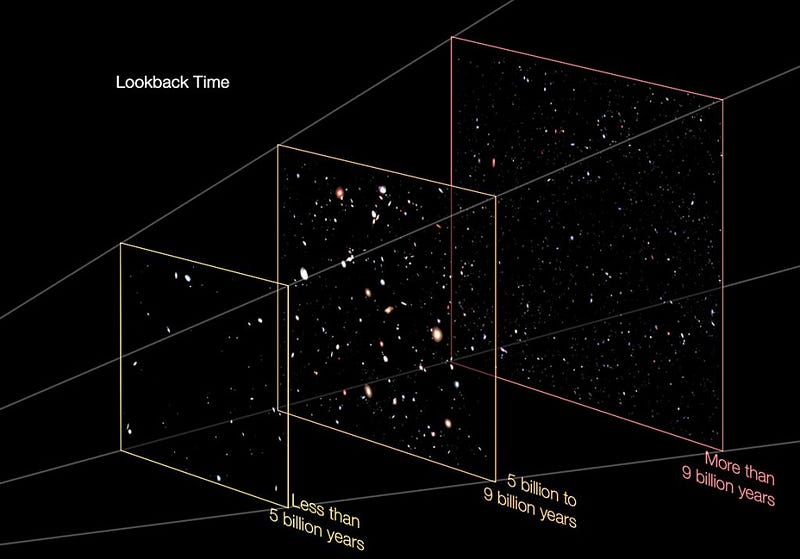
But this remarkable collection of hundreds of billions of galaxies doesn’t just sit there in the Universe; our Universe isn’t static at all. Instead, all the galaxies in the Universe tend to expand away from one another, and although gravitation can clump and cluster galaxies together, on the largest scales, galaxies and clusters are unbound, and will eventually expand away from everything that isn’t already gravitationally bound together.
This means that the structure we see in the Universe today wasn’t like this in the past; galaxies and clusters used to be closer together in the past. In addition, the Universe’s structure won’t be like this in the future either; galaxies and clusters will be separated by ever increasing distances in the future!
There are a few analogies that are commonly used to explain this: you can think of galaxies as coins pasted to the surface of a balloon which is being inflated, or as raisins inside a loaf of bread that’s being baked. In both cases, the galaxies themselves don’t expand, but over time, the distance between them does.
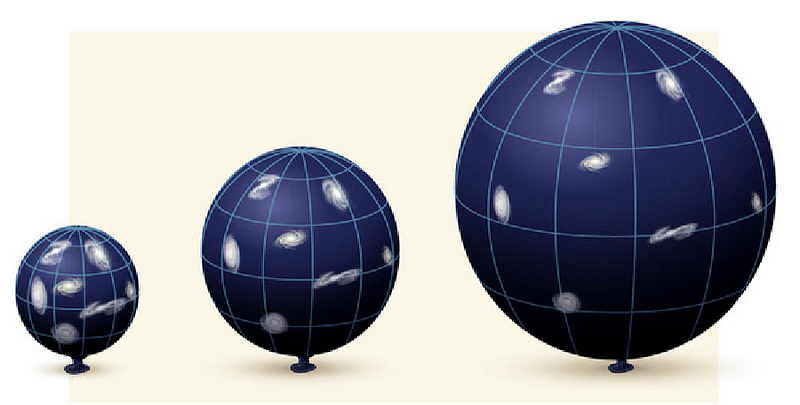
But you might worry about what’s actually going on with space, itself, in an expanding Universe. As you might have intuited, space isn’t really getting thinner, stretched or more tenuous in any real sense of the word. A stretched balloon will eventually burst, bread has a maximum size to which it can leaven, and space has no such limit. In addition, it’s not like the space of today has different intrinsic properties from the space of 10 billion years ago, nor will it have different properties 10 billion years from now.
A superior picture is one where, as the Universe expands, more and more space simply gets created in between these tightly gravitationally bound structures.
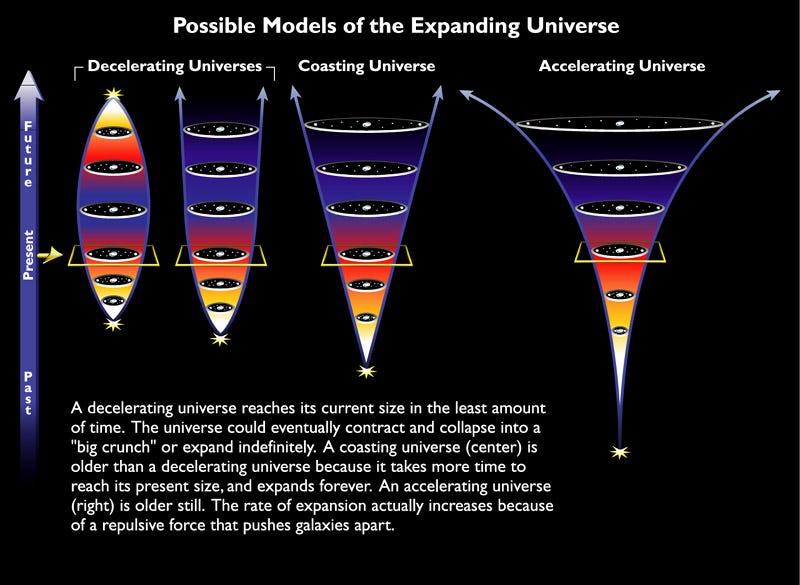
This wouldn’t bother most of you if empty space were truly empty, in the sense that it didn’t have any intrinsic energy in it. But that’s not the case for empty space in the Universe we live in!
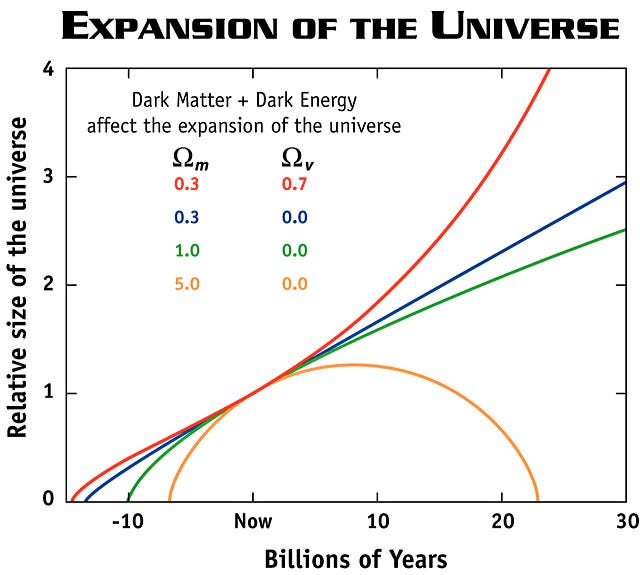
We could have lived in a Universe that will someday recollapse (orange curve) under its own gravity, expanded away into infinity (blue curve) because gravitation was insufficient to recollapse it, or (green curve) skated right on the border between the two, where the expansion rate drops to zero, asymptotically, but if there were even one more proton in the Universe, it would have recollapsed.
But none of those is our Universe; we live on the red curve, where there’s an intrinsic, positive energy to space itself. That’s what dark energy actually is: the energy intrinsic to empty space. And at this point in time, it’s responsible for more than two-thirds of the total energy in the Universe, a ratio that will only continue to increase as the Universe continues to expand, and more space continues to be spontaneously created.

“Wait a minute,” I hear you objecting, “if you’re just spontaneously creating more space out of nothing, and space has an intrinsic energy, aren’t you violating the conservation of energy?”
It’s a good objection. It’s a reasonable objection. And it’s not one that I’m going to weasel my way out of on the technicality that in General Relativity, “energy” is not a technically well-defined quantity. Because even though that’s technically true, we still have a good intuition about energy and its different types.
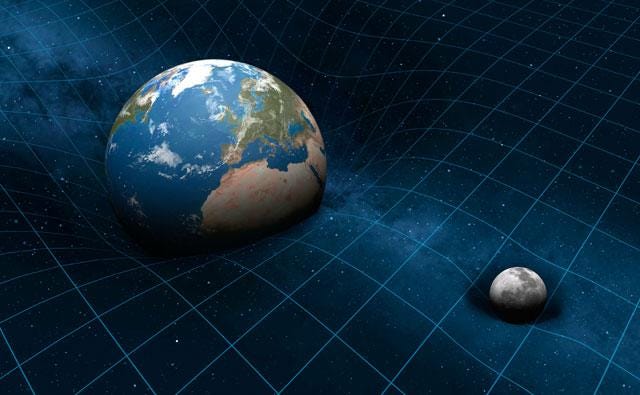
We know that there’s gravitational potential energy, which tells us how tightly things are bound. We know that there’s kinetic energy, which is the energy of motion. And we know about nuclear, chemical, electrical, and a whole lot of other forms of energy.
Well, there’s one more that I want you to keep in mind, and it’s one you don’t think about very often: work. Work is the amount of energy done when you apply a force to a moving object over a distance, in the same direction that the object’s distance changes.
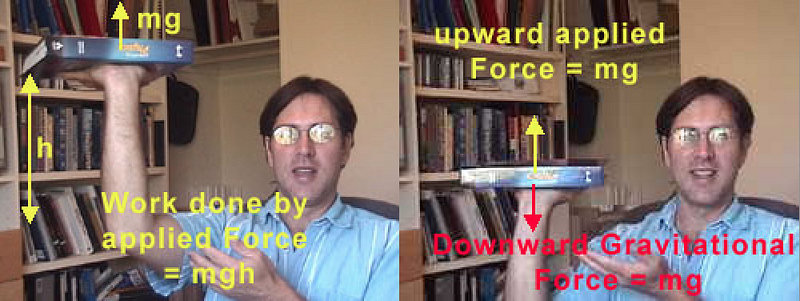
What this means — in a gravitational field — is that if you apply a force upwards to an upwards-moving book, you do positive work. (I.e., you add energy to the system.) But if you apply a force upwards to a downwards moving object, you do negative work. (I.e., you remove energy from the system.)
In general, when you push in the same direction the book is moving, you do positive work, adding energy to the system, and when you push in the opposite direction, you do negative work.
Now, let’s think about the Universe. You’ve got this sphere-like object expanding, and there you are, this constant energy density (i.e., dark energy), and you fill the sphere. You’re positive energy. You’re gravitationally pulling this sphere in on itself. But what’s the sphere doing?
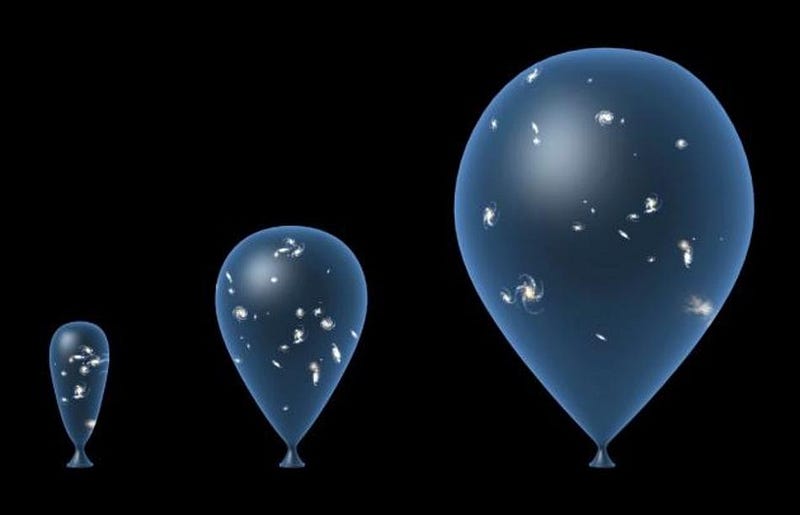
It’s expanding, and it’s expanding outwards. In other words, you’re (gravitationally) pulling inwards, which is the opposite direction as the expansion, and so you’re doing negative work!
In other words, yes, we are creating more space, and that space does have an energy intrinsic to it. But in addition to the galaxies being less tightly bound as space expands, and in addition to the radiation being lower in energy as it continues to be redshifted, the negative work done by the existing energy-of-space as the Universe expands is where the extra energy to create the new space comes from!
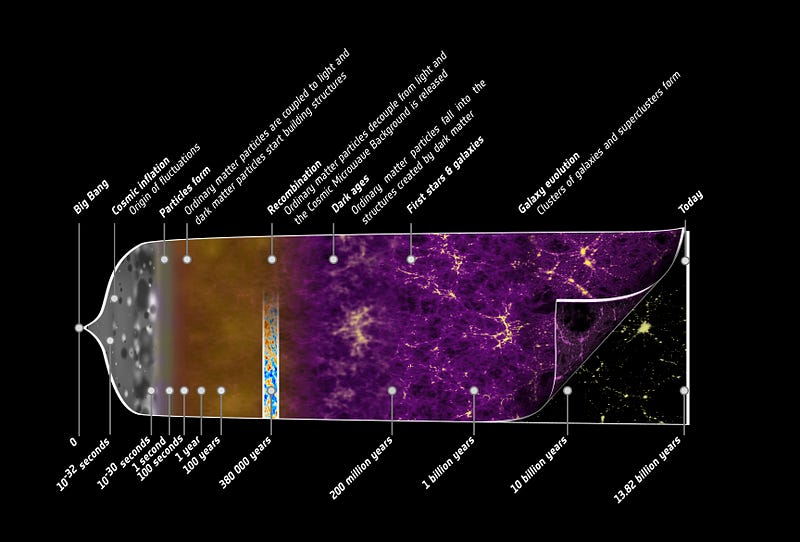
If you want to dive into the technical details, I recommend this 1992 paper by Carroll, Press and Turner, which also derives the reason why dark energy needs to have a negative pressure to make this all work!
So if you’re asking where the energy for this “dark energy” comes from, it comes from the negative work done on the expansion of the Universe. And that’s why energy, if you choose to allow it to be defined, can be conserved, even in a Universe with dark energy!
Head on over to our Starts With A Bang forum at Scienceblogs and weigh in!





